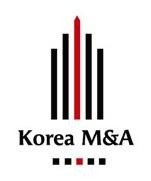| 일 | 월 | 화 | 수 | 목 | 금 | 토 |
|---|---|---|---|---|---|---|
| 1 | 2 | |||||
| 3 | 4 | 5 | 6 | 7 | 8 | 9 |
| 10 | 11 | 12 | 13 | 14 | 15 | 16 |
| 17 | 18 | 19 | 20 | 21 | 22 | 23 |
| 24 | 25 | 26 | 27 | 28 | 29 | 30 |
- OTCBB
- taiwan
- nda
- Merger
- Korea M&A
- Korea
- China Construction Bank
- buyout
- PEF
- case study
- Japan
- Confidential Agreement
- Japan Tobacco
- Acquistion
- hong kong
- CA
- cgi korea
- M&A
- Letter of intent
- Investment
- China
- LOI
- acquisition
- Bank
- capital gate
- LOTTE
- Malaysia
- securities
- private equity
- sk
- Today
- Total
Korea M&A Corporation
Equity Firms Buy Korean Paper Mills 본문
Norway-based paper company Norske Skogindustrier ASA said it has agreed to sell its South Korean subsidiary for 3.2 billion Norwegian kroner ($621.4 million) to Morgan Stanley Private Equity Asia and Shinhan Private Equity as part of its efforts to cut debt.
"The sale of the business in Korea will reduce Norske Skog's net debt by approximately 25%. This will give us more financial flexibility, and provide an improved basis for the further work to restructure the group," said Chief Executive Christian Rynning-Tonnesen.
As part of the deal, the buyers will also assume 1.1 billion kroner of debt and liabilities, including a $130 million intercompany loan that will be repaid to Norske Skog from Norske Skog Korea Co. at closing.
Norske Skog, a producer of newsprint and magazine paper, had net interest-bearing debt of 15.7 billion kroner at the end of the first quarter of 2008. That will be reduced to 11.9 billion kroner on completion of the deal, the company said. Its gearing -- the ratio of net interest-bearing debt to equity -- will be reduced to 0.84 from 1.12 as of March 31.
Norske Skog shares rose 22% to 27.70 kroner, outperforming a broadly higher Norwegian market. Up to Friday's close, the stock had dropped 74% in the past year as the cost of raw materials rose and competition intensified.
The transaction, expected to be finalized in late July or early August, includes two newsprint mills, Jeonju and Cheongwon. Norske Skog will continue producing newsprint in Asia through its ventures in China, Thailand and Malaysia.
The unprofitable Korean operations contributed 845 million kroner to Norske Skog's total revenue in the first quarter of 2008, but cut group net profit by 625 million kroner. The company won't book a material gain or loss from the sale of the operations.
Nordic makers of pulp and paper have been under pressure to consolidate and reduce overcapacity in the face of rising input costs and stagnating prices.
